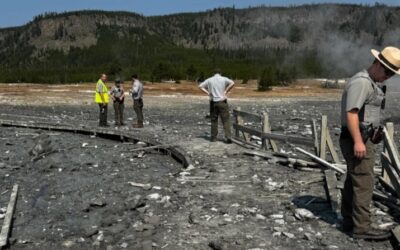Middle-class folks who want to make Jackson their home don’t have many options these days.
Housing Authority director April Norton listed off some numbers to explain. The median income for a single person living in Teton County is around $72,000, she said. (That’s $10,000 higher than the national average.) Meanwhile, the median income for a local family of four comes in at $102,000.
Those numbers are skewed by some of the valley’s big dollar (read: millionaire) earners. But even people who are earning the median income still don’t make enough to afford a home in Teton County.
That’s because the median price for a single-family home in the town of Jackson last year was more than $1 million dollars. (The town of Jackson, Norton pointed out, is the cheapest place to buy a home in Teton County.) “You need to earn about $300,000 a year to afford that single-family home,” Norton said.
The struggle to house local workers is nothing new here. But it’s recaptured the spotlight because of the upcoming SPET election on November 5. Early voting is underway and $5.5 million for housing is on the ballot.
The specific purpose excise tax is the sixth penny of sales tax that residents and visitors already pay on goods and services. Locales all over the state use this sixth penny to fund infrastructure improvements that broadly benefit the community. Voting on SPET allows you to decide where that sixth penny is spent. There are 10 initiatives on this year’s ballot totaling $77 million. You can choose to vote for all, some, or none of them. Initiatives need the simple majority to pass. Learn about the others here.
Leading up to this SPET election, housing hasn’t amassed nearly the same attention as, say, wildlife crossings. That initiative is listed at roughly twice the price, $10 million, and it has drawn widespread support thus far with impassioned proponents packing government meetings and sending letters to elected officials. Some supporters also formed a political action committee to urge its passage.
But getting the community on board to fund affordable housing appears less certain. Two of the three housing initiatives on the 2017 SPET ballot didn’t receive enough votes to pass. And recently, the battle over a workforce housing development at 440 West Kelly has highlighted a fissure. A small group of neighbors who opposed a plan for workforce housing in their neighborhood effectively divided elected officials on the proposal.
Still, affordable housing for the middle class remains an urgent need. But exactly how urgent is that need right now?
“Dire. Severe. Very important,” Norton said.
Norton pointed to the 1,000 households on the Housing Authority’s waiting list. They represent 2,300 people or 10% of the county’s population. Community members also voiced a need for housing through a recent survey. The 2018 Community Health Needs Assessment found housing to be the number one most important factor for its 1,335 respondents.
According to the report, when asked about the most important factors for a healthy community, respondents said affordable housing is their primary issue. Fifty-two percent of respondents selected affordable housing as their first, second, or third choice. A quarter of respondents characterized housing as the most important factor.
The report also found that 19% of respondents are living in “severe housing.” That means they live without a kitchen or complete plumbing. It could also mean their home is extremely overcrowded or that they are paying more than 50% of their income to utilities.
That’s a notable finding given Wyoming’s overall rate of severe housing is only 12%.
Another number Norton finds herself mentioning these days: the need for housing has become so dire that at least 81 students in Teton County don’t have a place to live. “That’s almost three percent of all the children who go to school,” Norton said.
The rate of homeless children in the valley is probably higher, however.
“I think these numbers are very under-reported,” Sarah Tenney, a social worker with Teton County School District, told KHOL in September. She said that is largely because of families who are forced to share housing with other families. They “are afraid to report that” for fear of repercussions with landlords, Tenney said.
Norton agrees that the valley doesn’t have a full grasp on the number of children without shelter here. “I’ve heard similar things from the school district and from advocates who work closely with those families,” she said. “And what about siblings? Are we counting them too?”
“This is something we don’t talk about enough as a community,” Norton said.





